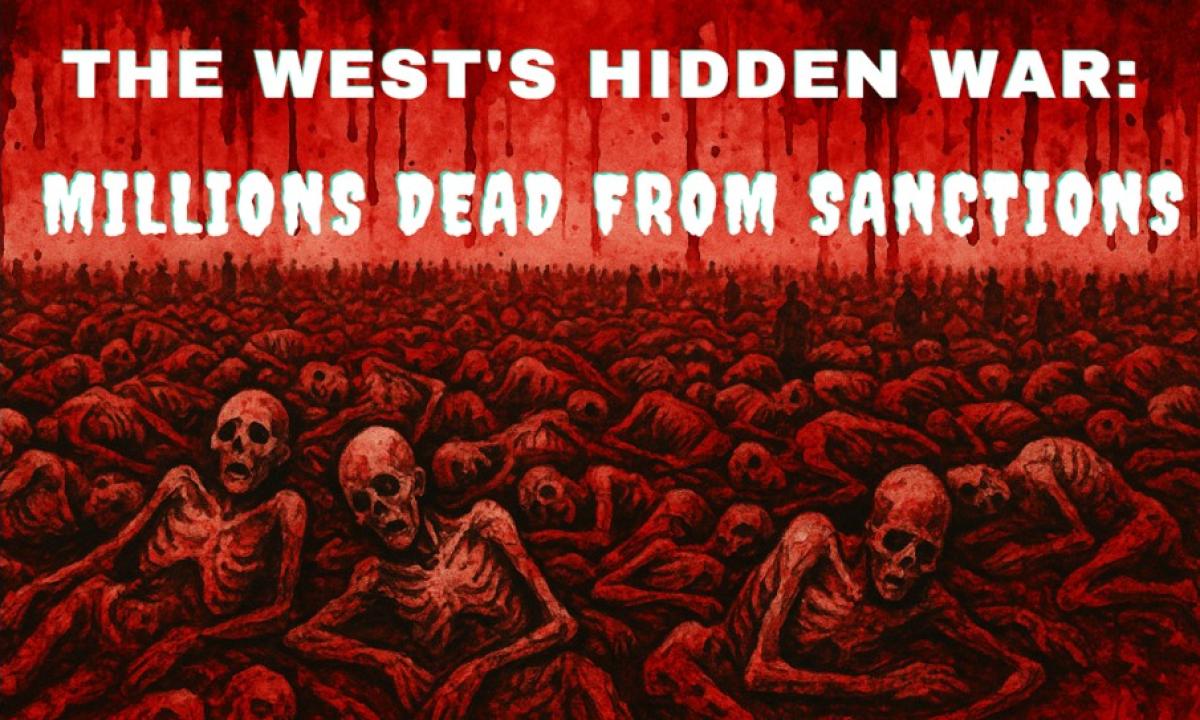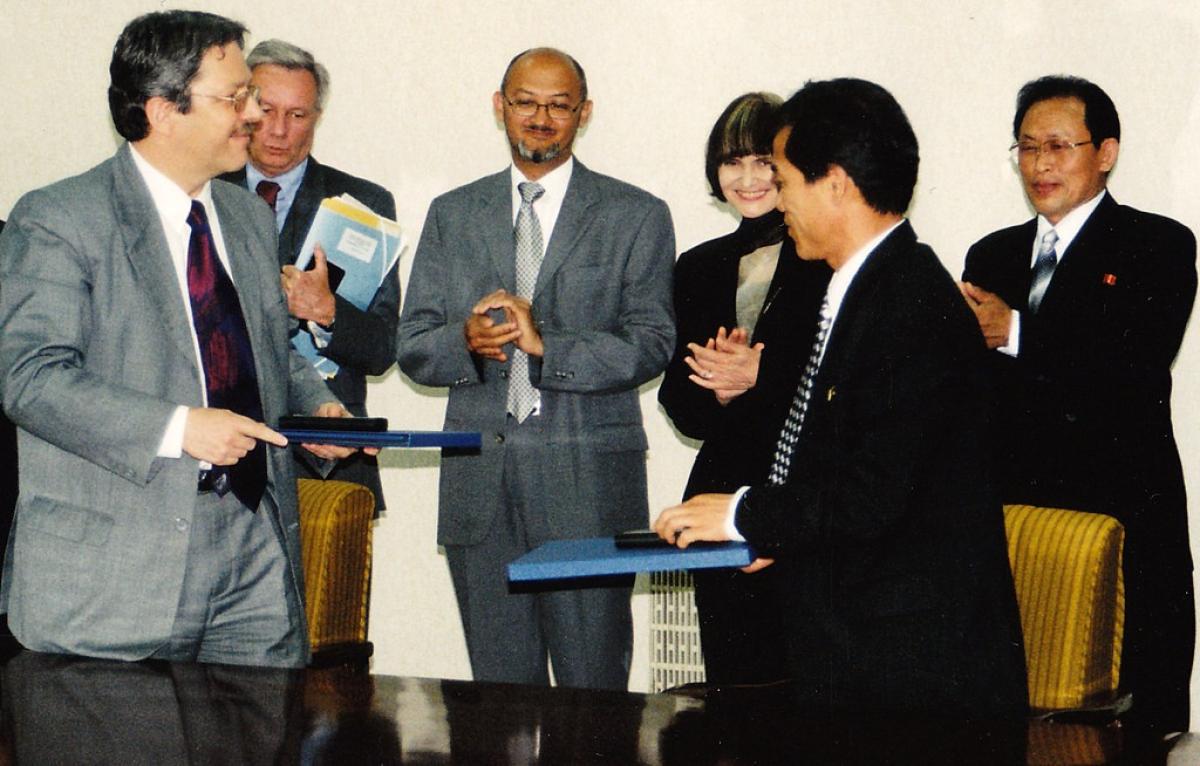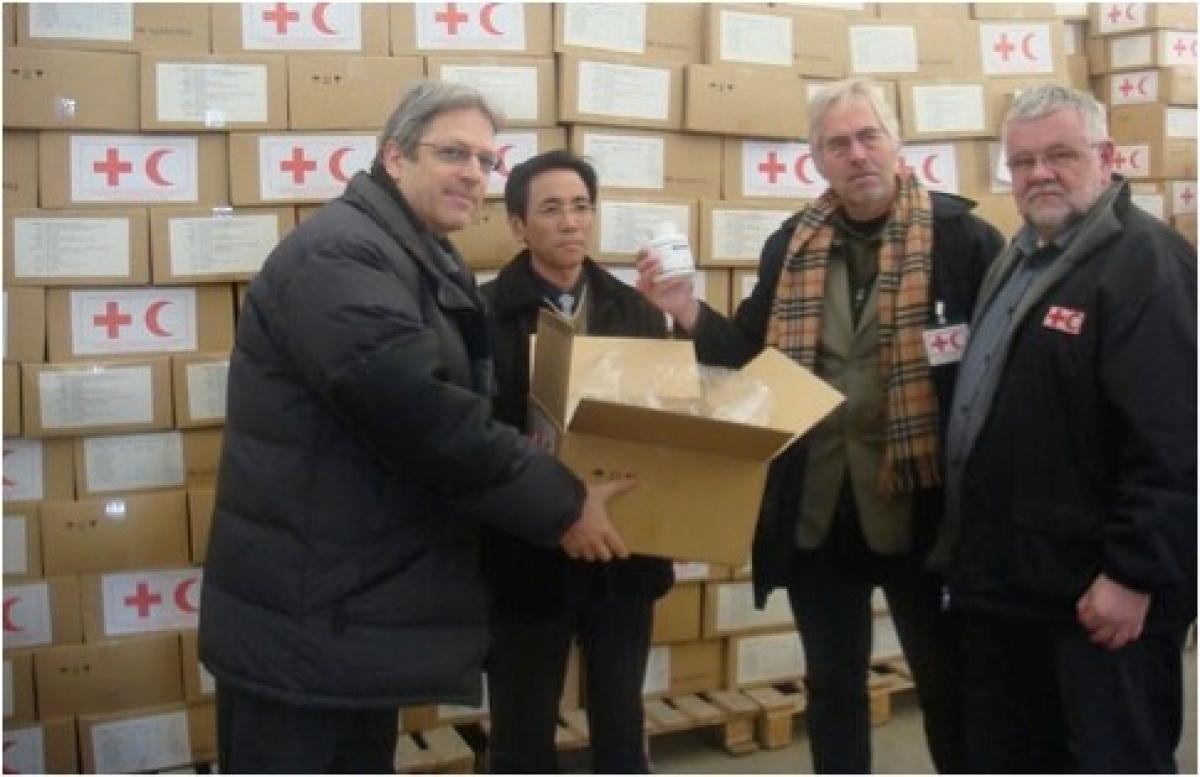
The Hidden Genocide
For decades, Western policymakers have presented sanctions as a “humane” alternative to military force. In reality, they are weapons that inflict mass suffering on people who have no control over their governments’ actions, as a compelling new study demonstrates. Yet for many Western academics, sanctions remain little more than an abstract topic for debate in the comfort of their offices. British Professor David Tizzard, for example, dismissed the human toll in his critique of my stance, writing blandly: “Academics debate the effectiveness of sanctions and their moral implications”—as if millions of deaths were merely a theoretical exercise.
To most other people, the word sanctions might sound like a bureaucratic tool—some quiet policy option buried in diplomatic meetings. But it has now been proven that sanctions specifically imposed by the United States and the European Union have killed an estimated 38 million people since the 1970s [1][2][3]—more than six times the number of victims of the Holocaust from 1941–1945.
This figure comes from groundbreaking research published in The Lancet Global Health, where economists for the first time took a global view of the human cost of sanctions. The results are devastating. For decades, sanctions have been wielded not as “peaceful alternatives” to war, but as weapons—tools used by powerful Western nations to discipline and punish the Global South. Sanctions are a form of coercion designed to force sovereign nations to align with U.S. and European interests. Any country that dares chart an independent path risks economic strangulation, which in many cases leads to mass death.
Smaller Nations Suffer Most
Western sanctions disproportionately punish smaller, resource-limited nations. Countries like Iraq, Iran, North Korea, Cuba, and Venezuela have experienced mass civilian deaths, famine, and economic collapse because they lack the resources, infrastructure, and global trading networks to absorb such measures.
Iraq: U.S. sanctions caused the deaths of an estimated 500,000 children [4].
North Korea: Restrictions on fertilizers, diesel, and farming equipment led to widespread hunger and food rotting in the fields.
Venezuela & Cuba: Sanctions have caused long-term economic damage, with Venezuela losing over USD 700 billion in GDP.
When I represented the ABB Group in North Korea, aiming to electrify poorer regions to lift millions out of poverty, U.S. pressure aborted the endeavor.

Later, the pharmaceutical company I was running—the first in North Korea to achieve WHO-certified Good Manufacturing Practices (GMP) standards—could no longer obtain essential production materials due to U.S.-led sanctions. As a result, maintaining these standards became impossible, likely leading to deaths among patients who lost access to essential, high-quality medicines.

These examples illustrate how sanctions devastate countries that cannot substitute imports or mobilize internal resources effectively.
Larger, Resource-Rich Nations Can Resist
By contrast, large, resource-rich countries like Russia and China have proven far more resilient. Despite Western attempts to cut Russia off from technology, finance, and export markets, the country leveraged its vast natural resources, domestic industries, and global partnerships to maintain and even grow its economy. Sanctions led to the transfer of formerly Western-owned assets into Russian hands, boosted local production, and strengthened self-sufficiency.
Similarly, China used U.S. and European restrictions on high-tech imports as an incentive to expand domestic infrastructure, technology, and global trade networks. These cases illustrate a clear pattern: sanctions inflict the greatest harm on smaller, vulnerable nations, while large, resource-rich countries can absorb, adapt, and even benefit from them.
Historical Examples
In the 1970s, an average of 15 countries were under unilateral Western sanctions at any given time. These were not precise—they targeted entire economies to destabilize industries, cut off trade and finance, and provoke domestic crises that could lead to government collapse.
Chile, 1970: After Salvador Allende’s election, Nixon ordered his advisers to “make the economy scream” [5]. Historian Peter Kornbluh described this as an “invisible blockade” [6]. The U.S. cut Chile off from credit and trade, resulting in unrest, economic collapse, and a U.S.-backed coup installing dictator Augusto Pinochet.
Iraq, 1990s: Following the Gulf War, sanctions devastated the economy. Access to clean water, electricity, and medicine collapsed, killing hundreds of thousands of children from preventable disease and malnutrition. UN officials described the situation as genocidal [4].
Venezuela, 2017–18: U.S. sanctions deepened a severe economic crisis, killing an estimated 40,000 people in just one year due to lack of food and medicine [1][2].
Sanctions as War by Other Means
These cases demonstrate that sanctions are not peaceful alternatives to war—they are war by other means, often deadlier because they target the most vulnerable: children, women, and the elderly. Since 2012 alone, over one million children have died as a result of U.S. and EU sanctions [1].
The Lancet study analyzed decades of data from 1970 to 2021, comparing mortality trends in sanctioned versus non-sanctioned countries. It found sanctions imposed by the U.S. and EU were associated with 38 million excess deaths over the past half-century [1][2][3]. In the late 1990s, over a million people died each year due to these policies. In 2021 alone, sanctions caused more than 800,000 deaths—several times the total deaths from warfare worldwide that year [2].
This is not collateral damage—it is often the intended effect. A declassified U.S. State Department memo from the 1960s recommended causing “hunger, desperation, and overthrow of government” in Cuba by deliberately weakening its economy. This is economic warfare, designed to starve populations into submission under a veneer of legitimacy.
Sanctions Kill: Will We Look Away?
Sanctions—often called “hunger weapons”—kill indiscriminately. Millions suffer in countries resisting Western control, while the elites the West seeks to overthrow remain largely untouched. Through the dollar, the euro, SWIFT, and critical technologies, Western powers can cut nations off from the modern world at a moment’s notice.
Yet cracks are appearing: China’s CIPS, BeiDou, and technological partnerships across the Global South are helping nations reclaim sovereignty.
Half a million people die each year—not from bombs, but from hunger, poverty, and preventable diseases caused by sanctions. Sanctions are not abstract policy—they are weapons. They have killed tens of millions, not with bombs or bullets, but through hunger, disease, and economic strangulation. I have seen this firsthand.
Yet academics debate, journalists comment, and policymakers treat it as a distant, bureaucratic issue—detached from the grim reality faced by those affected. The truth is undeniable: sanctions kill. To look away is a moral choice with deadly consequences. The question is not whether sanctions work—it is whether we are willing to let them continue killing on this scale.
References
Rodríguez, F., Weisbrot, M., et al. (2025). The human costs of unilateral economic sanctions: Evidence from global mortality trends, 1970–2021. The Lancet Global Health.
Center for Economic and Policy Research (CEPR). (2025, Sept 3). New study estimates over half a million people die each year due to unilateral economic sanctions. PR Newswire. Retrieved from https://www.prnewswire.com
Al Jazeera. (2025, Sept 3). US and EU sanctions have killed 38 million people since 1970. Retrieved from https://www.aljazeera.com
Halliday, D. (1999, Sept 23). Former UN official says sanctions against Iraq amount to genocide. Cornell Chronicle. Retrieved from https://news.cornell.edu/stories/1999/09/former-un-official-says-sanctions-against-iraq-amount-genocide
Transnational Institute (TNI). (2013). Covert action in Chile 1963–1973: Declassified U.S. documents. Retrieved from https://www.tni.org/en/article/covert-action-in-chile-1963-1973
Kornbluh, P. (2003). The Pinochet file: A declassified dossier on atrocity and accountability. The New Press.
«The Hidden Genocide»